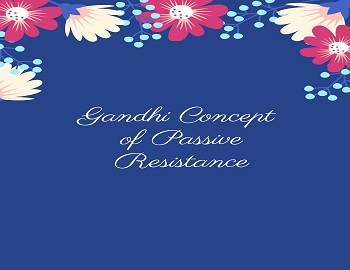Meiji Restoration:
Restoration of the Emperor’s Power: A new era dawned upon Japan after the abolition of the office of the Shogun. Now all the power of Japan was concentrated in the hands of the emperor. Emperor Komei had passed away just eight months before the last Shogun submitted his resignation. He was young still he had great faith in the age-old traditions. His descendant Meiji (Meiji means “wise administration” and it is the name given to his administration; his Christian name was Mutsuhito) was only fourteen years old when he ascended the throne. Naturally, he was influenced by his advisors. He accepted the ideals of the new age. He was diligent, prudent, and moderately progressive. During his reign, Japan was not only modernized, but it also became a powerful nation. Towards this, not only the ruling class but also every citizen made an important contribution.
Reforms in the Meiji Period- The young emperor was supported by all those who favored drastic changes. These people wanted a total overhaul and reorganization of administration and now taking advantage of the reinstatement of the emperor wanted to develop a system of administration on the pattern of monarchy as well as the administration of Western countries. The common people made a still more important contribution towards this than the land-owning classes. Samurais, who are called the warrior class of Japan and members of the Daimo clans surrendered their rights in the interest of the country. Japan took full advantage of the staunch patriotism which thrilled every Japanese. Full care was taken to see that the country stood united in case of foreign aggression and was ready to learn everything from every place which strengthened and modernized the nation. Now Japan as an organized center or nation began to pass through a crucial period of transformation unmoved by the political vicissitudes of the past. The reign of this new emperor of Japan is called Meiji which is “development-orineted peace”. This age began on January 25, 1868, and came to a close on July 30, 1912, when Mutsuhito passed away. Goto Yasushi has divided the development of the imperial system into three periods:
- 1868 to 1884 when the basic features of the system were laid down.
- 1885 to 1895 when the system was implemented.
- 1895 to 1905 when the reconstruction was undertaken.
This system rested on the two columns of bureaucracy and military.
Centralization of Administration: The abolition of the Shogun regime may only be considered the first step in the direction of administrative reconstruction. The important task before the emperor was to establish a well-organized and powerful government in the country so that forgetting all its internal dissensions the whole of Japan might come under a strong central administration. This could be possible only when feudalism was completely wiped out of existence and the emperor treated all the subjects on an equal footing. To perpetuate his dominance the Tokugawa Shogun exercised strict control over the landlords. “Sankiu Kotai” laws did not allow the landlords to build or repair forts, to issue currency, to build warships, or to establish matrimonial alliances without permission. In other words, they needed Shogun’s permission for everything. Not only this, the landlords were required to spend four months every two years in Yeddo, the capital of the Shogun. The landlords thought that such instructions were meant to humiliate them, so they helped in the abolition of the office of the Shogun and the reinstatement of the power of the emperor. First of all the capital of the country was shifted from Kyoto to Yeddo and it was rechristened Tokyo or the “eastern capital”. Shogun’s fort was converted into an imperial residence. These changes marked the end of the secluded and powerless life of the emperor. The change of capital brought the emperor closer to the center of his country and by setting up the center of administration near the sea coast he indicated his relations with foreigners. To compete successfully with Western countries, the nation needed to be well-organized and integrated. The nation needed a political system equally applicable to all citizens and exercised by an organized executive. Several steps were taken in the direction of the centralization of the nation after the abolition of the Shogun system. In 1868, a council of ministers was formed on the pattern of China. It had three categories of officers- Sosai, Gijo, and Sanyo. Sosai was the highest office and only near relations of the emperor got it. Class I councilors were called Gijo, half of the Gijo were from the royal aristocracy (Kugen) and the other half from the Chief dynasties (Daimo) of the local landlords. They were partly legislators and partly administrators. Class II councilors were known as Sanyo. Five Sanyos came from Kugen and fifteen from Samurai classes. The last two councilors worked under a Sosai. This structure of administration was changed the same year in which it came into existence and the rights of all three offices were transferred to Daijokwan or the legislative council. It had two houses: the state council or the upper house consisting of Gijo and Sanyo and the legislative assembly or the lower house comprising the representatives of the landlord class. The real power was vested in the state council. Besides these, there were officers who worked under two chief ministers. These ministers maintained liaison between Daijokwan and the royal court. The advantage of this system was that the whole power was concentrated in one organization. It also fulfilled in 1868 the Emperor’s oath that he would consult the administration in public works.
End of Feudalism: This new administration working through Daijokwan had to face some very serious problems. The immediate need was to establish its authority throughout the country. Feudalism appeared as the main obstruction in its way. Effective centralization of authority could not take place as long as the feudal chiefs stood between the royal administration and the public. Therefore in 1868, a proclamation was issued according to which a civilian officer would be planted as the representative of the central administration in the domain of each feudal chief. Thus began a system of administration that was controlled by Tokyo. Another important step in this direction was taken in 1869 when with a view to strengthening the central government, the western families of Kido and Saigo and other leaders persuaded the leaders of Satsuma, Choshu, Hijen, and Tosa families to hand over land and population maps of their areas as well as other documents to the emperor. This clearly confirmed the Emperor’s government in these areas. The remaining big and small landlords whose number was around three hundred followed Sacho-Hito (an acronym for Satsuma, Choshu, Hijen, and Tosa) and willingly surrendered their estates to the emperor. Soon after this, a royal command was issued in 1871 which finally abolished feudalism. Thus the work of abolishing the feudal system was accompanied during the period from 1868 to 1871. It was a notable event in the field of social and political organization of Japan. It will be no exaggeration to call it a bloodless revolution. Now the nation emerged out of the darkness of the Middle Ages and entered the brightness of the modern age.
This revolutionary change in political structure affected all the social classes. The abolition of feudalism affected the peasants the most. In 1871 about 80% of the population depended on agriculture and most of them were independent farmers. These farmers opposed the Shogun regime and supported the Meiji organization because they hoped that this would rid them of their responsibility towards the feudal lords. As they had expected the farmers now got the freedom of self-decision, to cultivate their land or to sell it and settle in cities.
Bankers, rice agents, and rich businessmen welcomed the reinstatement of the sovereignty of the emperor and the abolition of feudalism. This included Mitsui and Sumitomo families also who had made the largest contribution to the restoration of the imperial prestige in 1868-71. The new government took the responsibility of paying the installments of the repayment of loans contracted by them.
The interests of the Daimo and Samurai classes were also kept in view while signing agreements terminating the special rights of the feudal chiefs. It was decided to pay a huge amount as a pension to these two classes.
They were allowed to pay 10 percent of their token land revenue and exempted from paying the expenses of the local administration. This agreement provided economic benefits to the Daimos but the Samurais suffered loss. There was not much difference in their token and real incomes; they were almost equal and they could hardly make the two ends meet. They were also deprived of special privileges and rights. But even then most of them accepted the situation gladly. It was partly due to their feelings of patriotism and partly to their ethics according to which running after money was considered against their prestige. The pension promised to be paid to former Daimo and Samurai classes shortly proved a heavy burden on the national exchequer. Payment through cash or government bonds in lieu of pension was announced in 1873.



![Muslim League [December 30, 1906] 4 Muslim League](https://gkscientist.com/wp-content/uploads/2021/05/Muslim-League.jpg)





Comments (No)